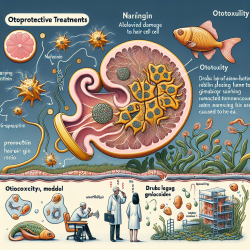Introduction
The relationship between personality and well-being in adolescents is a complex and multifaceted area of study that offers significant insights for practitioners working in educational and therapeutic settings. The research article "Personality and Well-being in Adolescents" by Moreira et al. (2015) provides a comprehensive analysis of how different personality dimensions affect adolescent well-being. This blog aims to help practitioners enhance their skills by implementing the findings of this research or by encouraging further exploration into this critical area.
Understanding Personality and Well-being
According to the research, well-being is a multidimensional construct that encompasses emotional, cognitive, social, and physical health aspects. The study utilizes Cloninger's psychobiological model of personality, which includes dimensions such as Self-Directedness, Cooperativeness, and Self-Transcendence, to explore their influence on adolescent well-being.
Key findings indicate that Self-Directedness is a significant predictor of both affective and non-affective well-being. Adolescents with high Self-Directedness tend to exhibit greater life satisfaction, better health-related quality of life, and more positive affect. Cooperativeness and Self-Transcendence also play roles, albeit more complex and dependent on interactions with other personality dimensions.
Implications for Practitioners
Practitioners can leverage these insights to foster positive developmental trajectories in adolescents. Here are some practical steps:
- Focus on Self-Directedness: Encourage activities that promote autonomy, responsibility, and goal-setting among adolescents. This can be integrated into therapy sessions or school programs.
- Enhance Social Skills: While Cooperativeness may not directly predict well-being, fostering empathy and social tolerance can improve adolescents' social networks and perceived social support.
- Explore Self-Transcendence: Introduce activities that promote a sense of connection to a larger whole, such as community service or mindfulness practices, which can enhance emotional well-being.
Encouraging Further Research
The study highlights the importance of non-linear interactions between personality dimensions, suggesting that a one-size-fits-all approach may not be effective. Practitioners are encouraged to delve deeper into these dynamics to tailor interventions that address the unique personality profiles of adolescents.
Further research can also explore cultural and developmental factors influencing the impact of personality on well-being. Understanding these nuances can lead to more effective, culturally sensitive interventions.
Conclusion
The insights from the research on personality and well-being in adolescents offer valuable guidance for practitioners aiming to enhance their skills and improve outcomes for young people. By focusing on key personality dimensions and encouraging further research, practitioners can play a pivotal role in promoting adolescent mental health and well-being.
To read the original research paper, please follow this link: Personality and well-being in adolescents.










